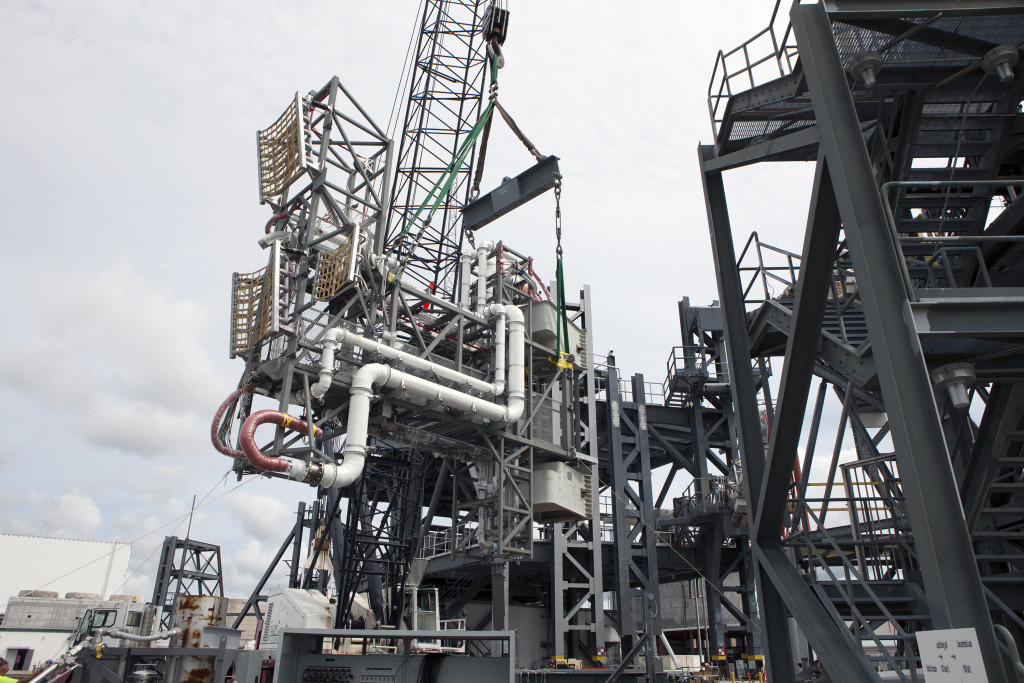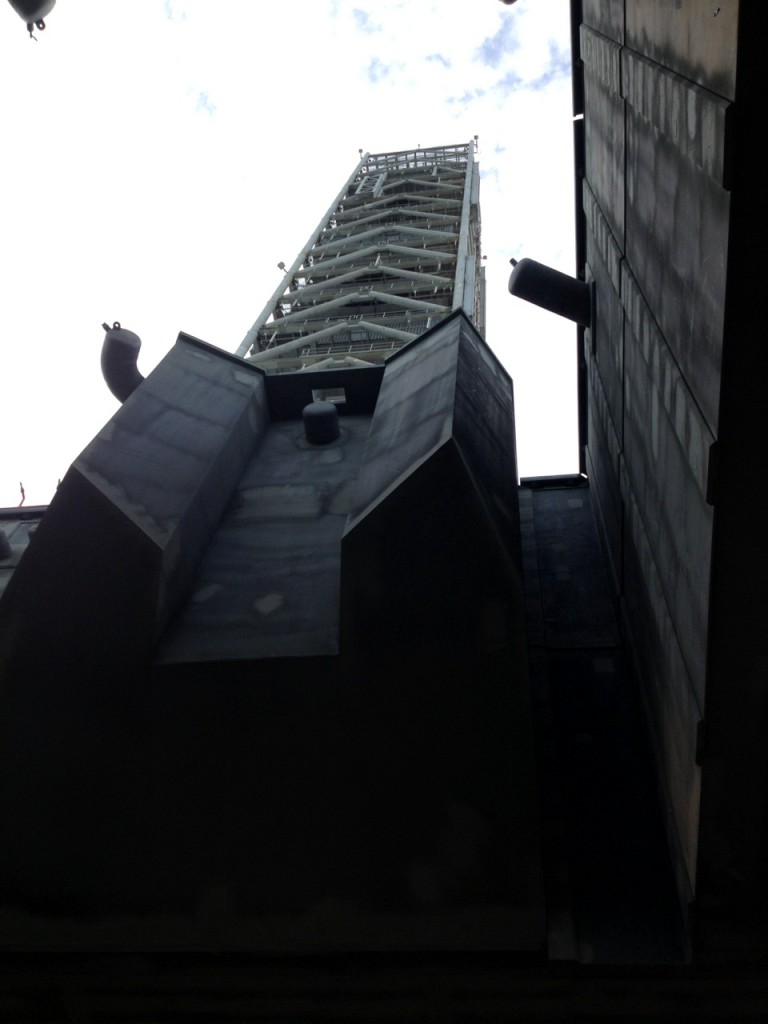
The second half of the H level work platforms for the Vehicle Assembly Building arrived today at NASA’s Kennedy Space Center in Florida. The H platforms are the third of 10 levels of platforms that will support processing of the Space Launch System (SLS) rocket and Orion spacecraft for the journey to Mars.
Hensel Phelps moved Platform H on an over-sized load, heavy transport trailer from the Sauer Company in Oak Hill, Florida, and was successfully delivered to the VAB west parking lot work area.
As the platform was being transported through Titusville, the edge of the platform contacted a light pole near US1 and DeLeon Street. There was no personal injury and the City of Titusville is working the repairs. There was very minor damage to the platform and no indication of structural damage.
A total of 10 levels of new platforms, 20 platform halves altogether, will be used to access, test and process the SLS rocket and Orion spacecraft in High Bay 3. Twenty new elevator landings and access ways are being constructed for each platform level. The high bay also will accommodate the 355-foot-tall mobile launcher tower that will carry the rocket and spacecraft atop the crawler-transporter to Launch Pad 39B.
The platforms are being fabricated by Steel LLC of Scottdale, Georgia, and assembled by Sauer. A contract to modify High Bay 3 was awarded to Hensel Phelps Construction Co. of Orlando, Florida, in March 2014.
The Ground Systems Development and Operations Program at Kennedy is overseeing upgrades and modifications to the high bay to prepare for NASA’s exploration missions to deep-space destinations.
The first two sets of platforms, J and K, were delivered to Kennedy earlier this year.
To read more about the new work platforms, visit http://go.nasa.gov/1ba5T6V.




 Platform J arrived at NASA’s Kennedy Space Center last week and was positioned in an area outside the Vehicle Assembly Building where workers will prepare the platform and a host of others just like it for installation inside the massive processing building. The platforms will replace work stands that were installed in the VAB when it was first built in the 1960s.
Platform J arrived at NASA’s Kennedy Space Center last week and was positioned in an area outside the Vehicle Assembly Building where workers will prepare the platform and a host of others just like it for installation inside the massive processing building. The platforms will replace work stands that were installed in the VAB when it was first built in the 1960s.

 The modified Mobile Launcher that will host NASA’s Space Launch System rocket was shown this morning to the news media following the completion of a series of modifications which strengthened the platform and tower to the demands of the booster that will be tasked with sending astronauts on a journey to Mars in the future.
The modified Mobile Launcher that will host NASA’s Space Launch System rocket was shown this morning to the news media following the completion of a series of modifications which strengthened the platform and tower to the demands of the booster that will be tasked with sending astronauts on a journey to Mars in the future.
